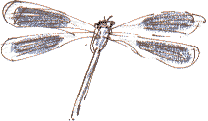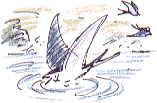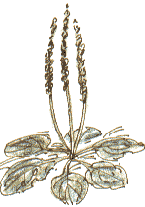Nature Diary
Rocks
History
Gallery
Home Page
  SWALLOWS swoop down to the canal and hover at the surface for a second or two, perhaps to take a drink.
SWALLOWS swoop down to the canal and hover at the surface for a second or two, perhaps to take a drink.
 A large damselfly patrols a clump of Reed Canary-grass, Great Willowherb and Mugwort. The way it folds its wings over its back identifies it as a damselfly (our largest in Britain) rather than a dragonfly, which rests with its wings outspread. Its four large indigo spots, one on each wing, identify it as a male Banded Demoiselle, also known as Banded Agrion.
A large damselfly patrols a clump of Reed Canary-grass, Great Willowherb and Mugwort. The way it folds its wings over its back identifies it as a damselfly (our largest in Britain) rather than a dragonfly, which rests with its wings outspread. Its four large indigo spots, one on each wing, identify it as a male Banded Demoiselle, also known as Banded Agrion.
Most wild species have a tendency to turn up in a particular habitat, but Andrew McGeeney's description of the needs of this damselfly in his Complete Guide to British Dragonflies is uncannily accurate for this part of the valley;
'The Banded Demoiselle requires a muddy bottom for the larvae and emergent or floating vegetation for the males to display on, as well as open meadows nearby for feeding grounds. It is most often seen along unpolluted slow-moving rivers and canals.'

The ratstail flower spikes of Greater Plantain are now conspicuous along waysides. The spoon-shaped leaves are remarkably resistant to trampling. In New England in the 1670s, the Indians called it 'English Mans Foot' because of the way it seemed to spread wherever the settlers trod.
|

 SWALLOWS swoop down to the canal and hover at the surface for a second or two, perhaps to take a drink.
SWALLOWS swoop down to the canal and hover at the surface for a second or two, perhaps to take a drink. A large damselfly patrols a clump of Reed Canary-grass, Great Willowherb and Mugwort. The way it folds its wings over its back identifies it as a damselfly (our largest in Britain) rather than a dragonfly, which rests with its wings outspread. Its four large indigo spots, one on each wing, identify it as a male Banded Demoiselle, also known as Banded Agrion.
A large damselfly patrols a clump of Reed Canary-grass, Great Willowherb and Mugwort. The way it folds its wings over its back identifies it as a damselfly (our largest in Britain) rather than a dragonfly, which rests with its wings outspread. Its four large indigo spots, one on each wing, identify it as a male Banded Demoiselle, also known as Banded Agrion.